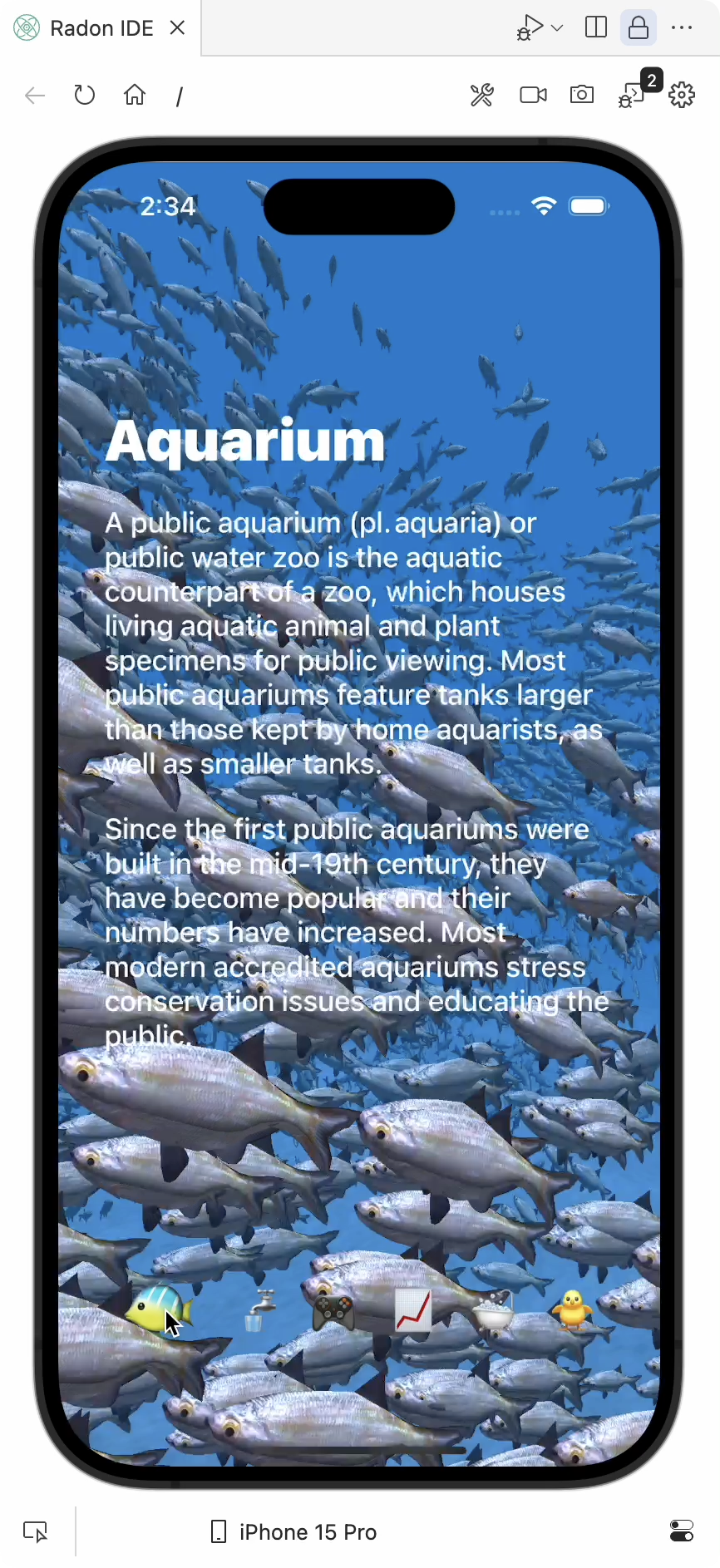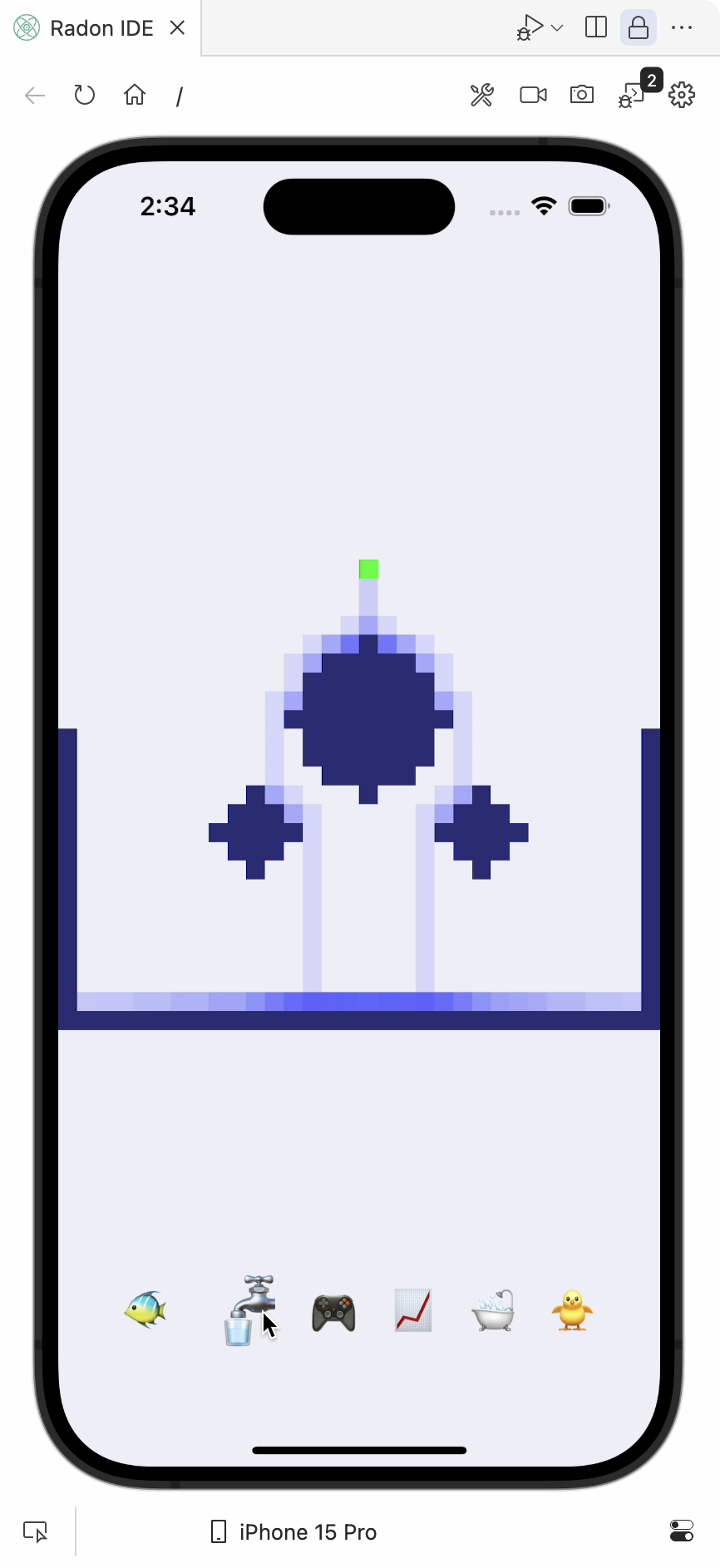React Native
Thanks to the react-native-wgpu package, WebGPU and TypeGPU can be used in React Native applications, giving easy access to the device’s GPU rendering and computing capabilities.
Example project
Section titled “Example project”You can check out the typegpu-rn-examples project, showcasing a few examples from our live examples page in a simple mobile application.



To use TypeGPU in your React Native application, install the following packages:
npm install react-native-wgpunpm install typegpuSince WebGPU is still yet to reach baseline in browsers, types for it need to be installed separately:
npm i --save-dev @webgpu/types{ "compilerOptions": { "types": ["@webgpu/types"] },}If you want to be able to use the TGSL functions feature of TypeGPU (JS functions transpiled to WGSL), you need to install the unplugin-typegpu package.
npm install --save-dev unplugin-typegpuAnd enable it in your project.
npm exec expo customizeSelect babel.config.js and add unplugin-typegpu/babel to the list of plugins in the config file.
module.exports = (api) => { api.cache(true); return { presets: ['babel-preset-expo'], plugins: ['unplugin-typegpu/babel'], };};After adding the plugin it might be necessary to clear the Metro cache.
npm exec expo --clearReact Native WebGPU is not yet supported by Expo Go.
If you previously used it for running the application, it is necessary to execute the expo prebuild command.
npm exec expo prebuildRemember to install native dependencies.
cd ios && pod install && cd ..To run React Native WebGPU on the iOS simulator, you need to disable the Metal validation API. In Edit Scheme uncheck Metal Validation.
Hello world example
Section titled “Hello world example”If you want to quickly test if the installation was successful, here’s a simple example component, rendering a blue triangle, that you can use in your app:
import { useEffect } from 'react';import { Canvas, useDevice, useGPUContext } from 'react-native-wgpu';import tgpu from 'typegpu';import * as d from 'typegpu/data';
const mainVertex = tgpu['~unstable'].vertexFn({ in: { vertexIndex: d.builtin.vertexIndex }, out: { outPos: d.builtin.position, uv: d.vec2f },})/* wgsl */ `{ var pos = array<vec2f, 3>(vec2(0.0, 0.5), vec2(-0.5, -0.5), vec2(0.5, -0.5)); var uv = array<vec2f, 3>(vec2(0.5, 1.0), vec2(0.0, 0.0), vec2(1.0, 0.0)); return Out(vec4f(pos[in.vertexIndex], 0.0, 1.0), uv[in.vertexIndex]);}`;
const blue = d.vec4f(0.114, 0.447, 0.941, 1);const mainFragment = tgpu['~unstable'].fragmentFn({ in: { uv: d.vec2f }, out: d.vec4f,})`{ return blue; }`.$uses({ blue });
export function Triangle() { const presentationFormat = navigator.gpu.getPreferredCanvasFormat(); const { device = null } = useDevice(); const root = device ? tgpu.initFromDevice({ device }) : null; const { ref, context } = useGPUContext();
useEffect(() => { if (!root || !device || !context) { return; }
context.configure({ device: device, format: presentationFormat, alphaMode: 'premultiplied', });
root['~unstable'] .withVertex(mainVertex, {}) .withFragment(mainFragment, { format: presentationFormat }) .createPipeline() .withColorAttachment({ view: context.getCurrentTexture().createView(), clearValue: [0, 0, 0, 0], loadOp: 'clear', storeOp: 'store', }) .draw(3);
context.present(); }, [root, device, context, presentationFormat]);
return ( <> <Canvas /> <Canvas ref={ref} style={{ aspectRatio: 1 }} transparent /> </> );}Further reading
Section titled “Further reading”For more information about React Native WebGPU, please refer to the react-native-wgpu documentation.